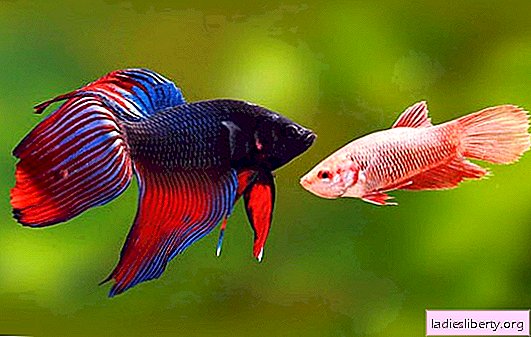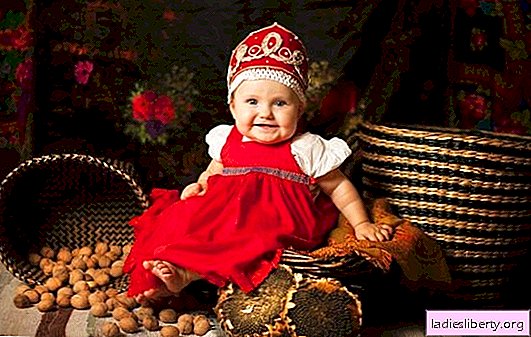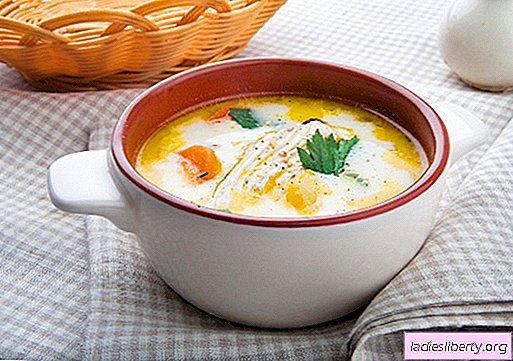
Betta splendens, or as it is usually called the "cockerel fish", is a fighting variety of aquarium fish. Two males cannot coexist peacefully in the same aquarium, therefore, the correct determination of the sex of fish for the aquarist is very important.
View Features
And today the shallow rivers of Thailand and other Asian countries remain the catching place for rooster fish. The elongated oval bodies of males of fantastically bright colors before the attack on the opponent were inflated, like balls. This once attracted people's attention to them. From ancient times, this variety was caught by peasants for fish battles, one of the most common gambling in those places.
When conducting fights, which delights the audience, the males observe a special ritual:
· When one of the rivals needs to rise to the surface of the water for a sip of oxygen, the second patiently waits for him without attacking.
· While two are fighting, the rest do not intervene. The winner fights the following applicants in turn.
Fishes reach their largest size - 10 cm in length only in their natural habitat, rarely taking such dimensions in an aquarium. The usual body length is about 5-6 cm. Moreover, the color can be any, but always very bright, striking.
Captivity of cockerel fish
Breeding experience shows that it is impossible to place several males in one aquarium at once. Females can be kept in flocks, but separately from the male. A good choice is a male-female couple. Theoretically, if the capacity of the aquarium is more than 10 liters, then two males can share this territory. However, this is rarely done, since with large capacities the fins can become deformed and the fish will lose its decorative effect. This is due to the fact that in its natural habitat, it settles in shallow rivers.
The range of comfortable water temperatures ranges from +18 to +24 degrees. However, at home it is recommended to maintain it at about 22-23 degrees. The pH level is in the range of 6.7 to 7.3. This mode is optimal for active life and reproduction. Aquarium capacity is selected at the rate of 3-4 liters per individual.
Cockerels belong to the double-breathing species, so they do not need artificial aeration. They are much more demanding on the purity of water and the environment. The recommended frequency of water changes is 2-3 weeks, since the accumulation of sludge at the bottom is unacceptable for these cleaners. Algae must grow at the bottom. Lighting is selected according to the choice of plants.
Feeding cockerel fish
By nature, this species is omnivorous. At home, it is recommended to feed the males with live food: bloodworms, tubule makers, zooplankton, which can be purchased or caught on their own, and stored frozen. Alternate such vitamin top dressing should be dry food enriched with minerals.
The optimal consistency of dry feed is flakes. Add food should be very metered - a single serving for 1 individual is not more than 2 grams. Frequency of feedings - no more than 2 times a day. Overfeeding adversely affects health, because these fish can easily carry out hunger strikes for up to 5 days.
External differences between males and females
There are a lot of them. The first thing to consider is age. Life expectancy for this species is limited to 3 years. In this case, puberty occurs already in 3-4 months. Since that time, females can already discern caviar in their stomachs, and after 2 weeks they are ready to throw it. Many varieties, after being prepared for spawning, acquire noticeable stripes along the body. Usually fish stores sell fish at this age.
The male cockerel is not just beautifully painted, but has wide fins - lateral, anal and caudal. In the official classification, it is customary to distinguish between varieties: long-tailed, short-tailed, crown-tailed, veiled and others. The difference between them is visible to the naked eye. The first is the most spectacular. Aquarists achieve by crossing unusual combinations of shapes and colors of this fighting species.
An excited and aggressive cockerel is a stunning sight. Fins floating in the water occupy as much or even more space around it than his body. The female is much more modest in color and size, her fins do not carry such a decorative function. But the main difference is considered to be a small outgrowth on her stomach (ovipositor), similar to a white egg, the male has nothing similar.
How does a rooster fish breed?
The breeding cycle is very short. From two weeks to six months, the female grows caviar in herself, after which she can be planted in a separate aquarium to the male. It should be borne in mind that not giving the opportunity to spawn soon you can get such a problem as a cyst in a female. Usually such individuals die.
Before breeding, male and female individuals are seated in separate aquariums, where the water level is low - up to 15 cm, and the temperature is high - ideally +27 degrees. Feed at this time you need 100% live food. These conditions stimulate the mating instincts, preparing the fish for mating games.
After a week, you can prepare the aquarium by placing only water and a small amount of algae in it. It is not worth putting the bottom to the bottom, but it is recommended to put a pot or driftwood to shelter the female. A male who intends to give offspring builds a nest on the surface of the water from air bubbles enveloped in his saliva. Caviar is swept into that house. Both are involved in the process, since without the active help of the male, the female will not be able to spawn. He literally "squeezes" her from the abdomen of his girlfriend. As soon as the process is completed, the female must immediately be sent to a separate aquarium.
After 1-2 days, fry appear from the eggs, which need only 3 days to reach the development of an adult. After that, they only grow in size, without changing the internal and external structure. All this time, a caring father looks after the eggs, returning the separated eggs and fry to the nest.
It is interesting that the species Bettaprima, Bettasimplex, BettaPi, Bettapugnax differ from the rest in that the males do not build nests, but collect the fertilized eggs and carry it in the mouth for 10 days. For these species, spawning requires not a rise in water temperature, but a decrease to +18 degrees.











